|
|
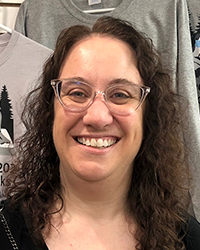 Jen Jen
|
 |
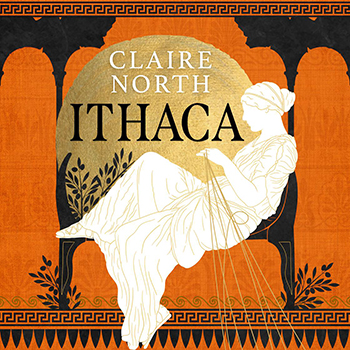
|
|
Ithaca
Claire North
I listened to this on libro.fm.
Admittedly, my knowledge of mythology is limited. I wasn't sure if I was going to be able to follow along with this Greek re-telling. I needn't have worried - while I might have gotten more out of the story if I was familiar with Greek players, I certainly still enjoyed a terrific story. At the time of this story, Penelope is in an awkward position. She might be a widow, but she doesn't know for sure. How long should she wait for her husband, King Odysseus, to sail home to the island of Ithaca from Troy? It's been seventeen years. Suitors are banging on her door; however, the pickings are somewhat slim since Odysseus took most of the men with him when he left. Elderly men and boys coming of age make up the male population. One of the fascinating things about this book is the narration (yes, hang on while I nerd-out for a moment) - it's both first and third person, simultaneously. How is this possible? It's narrated by the goddess Hera, so she provides the usual 3rd person omniscient voice, but since she's her own entity, struggling with being married to Zeus and her relationship to her stepchildren, she also provides a 1st-person voice. She shamelessly lights up or pouts when mortals either give her praise or forget her. I love this book and the narrator was excellent, which made it a great choice for an audio book. I've ordered a print copy to gift to Tim who recently house/dog-sat for us, I look forward to his reaction, as he's much more familiar with Greek mythology than I am.

|
| |
|
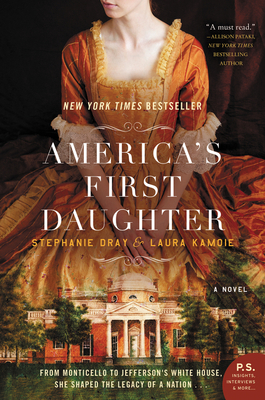 |
|
America's First Daughter
Stephanie Dray and Laura
This historical novel was selected by the Beagle Women's book group for discussion. The novel is narrated by Thomas Jefferson's eldest daughter, Martha "Patsy.” The novel spans from Patsy's childhood, before the death of her mother, and beyond the death of her father, who lived to be 83 years old. During that time, the Jeffersons move to France, including the famous Hemings family members (did you know Sally Hemings was in fact a half-sister to Martha Jefferson, meaning she was technically a sister-in-law to Thomas Jefferson??), which proved to be a true test of the Hemings’ devotion to the family, since slavery was illegal in France. Patsy provides a unique perspective on early American politics. As a child and young woman, she has more interest in social life than politics, but as she ages, her interest and understanding grow. Being the daughter of a famous politician did not mean Patsy had a carefree life - death came for those dear to her, despite youth and privilege. The treatment of men towards their wives could be appalling (and not much legal protection was available yet.) Wealth was relative and ever-changing. The story was based on thousands of letters of the Jeffersons and their contemporaries (we get a fun view of Dollie Madison!) I thoroughly enjoyed this read!
|
| |
|
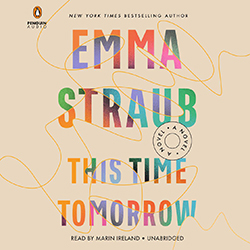 |
|
This Time Tomorrow
Emma Straub
I'd been meaning to read this book for....a while, but for some reason never got around to it. Then Peter Straub, the father of Emma Straub, died and This Time Tomorrow immediately went to the top of the TBR pile. I'm glad I waited. The seed for this book was that while Peter Straub was dying, and Emma visited him in the hospital, he told her, "You should write about a woman visiting her father in the hospital." She did, and not in a way you'd ever expect of Emma Straub. The beginning of the book is quite Emma-Straub-ish, the layout of a cast of characters in which friendship and family rule the heart and mind. Our heroine Alice is a woman in her late 30s who works at the private school she once attended and maintains a relationship with a boyfriend. She frequently visits her father, who is hospitalized. She is still best friends with her best friend from high school, Sam, whose life has turned out differently than Alice's. Sam has married, had children, and lives with her family in New Jersey. Just before Alice's 40th birthday, she and her boyfriend break up. Alice and Sam go out to celebrate Alice's 40th, but Sam has to leave early, leaving Alice to drink alone. When Alice wakes in the morning, it's her birthday again—but it's her 16th birthday. Her father is healthy and she's back in high school with Sam and all her other friends. That's right, time travel. This is one of those books that I can't tell you much beyond this without ruining the book for you, but believe me when I tell you I think it's Emma's finest book (and she's written a number of very good books). It has so much depth. Book groups are going to eat this up for all the fodder it offers to discuss! I listened to this on libro.fm and the narrator does a great job.

|
| |
|
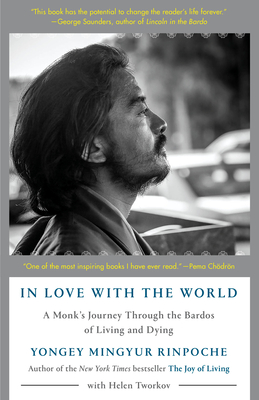 |
|
In Love with the World:
A Monk's Journey through the Bardos of Living and Dying
Yongey Mingyur Rinpoche
Every once a while, a book in the bookstore will make itself known to me and insist I engage with it. This was the case with In Love with the World. The author is the same age as I am and has lived a completely different life than my own. He was born in a small Himalayan village near the border of Nepal and Tibet. He is the son of the renowned meditation master Tulku Urgyen Rinpoche and Sönam Chödrön, a descendant of two Tibetan kings. Mingyur began serious meditation study at the age of 9 and by the time he was 12, he was formally enthroned as the 7th incarnation of Yongey Mingyur Rinpoche by Tai Situ Rinpoche. When In Love with the World opens, the author is running away from his home to experience the world for himself. He leaves behind a note explaining, and then jumps the fence when the guard is away from the fence. It very much reminds me of the story of the Buddha himself, raised in wealth and a protected environment deciding to strike out on his own. The writing is honest and straightforward and easy to read. You don't need to be familiar with Buddhist terms or traditions to read this book. The author explains as he goes and really, the point of it all is his experience in the world as someone who grew up protected from the world. I'm savoring this by reading one short chapter a night. I expect it eventually will live among my Pema Chodron books and I will occasionally re-read it.
|
|
 Sally Sally |
|
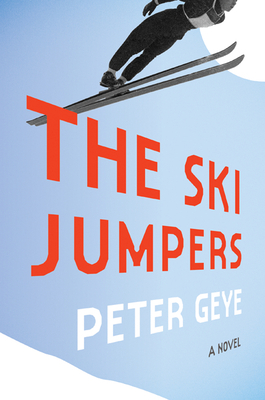 |
|
The Ski Jumpers
Peter Geye
Clear your calendar—Peter Geye has a new book out!
Pops, Jon, and Anton Bargaard. A father and two sons, ski jumpers all.
Nearly forty years after his last jump, Jon still dreams of jumping, and muscle memory takes his body through the preparation, the thrill of soaring during the flight itself, and the peace which followed.
However, there hasn’t been peace in the Bargaard family since those camaraderie-filled days of jumping,
After a diagnosis of younger-onset Alzheimer’s, Jon allows himself to reflect on his once close relationship with his brother, and the relationships of both with their father and their mother. He explores the secrets and sacrifices which have torn their family apart.
Although Jon and his wife, Ingrid, have built a life-giving marriage and he has had a satisfying career as a writer and professor, he is drawn to seek understanding and reconciliation with his brother while it’s still possible.
As always, Geye writes beautifully of family and winter. While the book is set primarily in Minnesota, it’s a family story with universal appeal. |
| |
|

|
 |
The Hilarious World of Depression
John Moe
I come from a long line of people who suffer from depression, five generations that I’m certain of, and I don’t think there’s anything hilarious about it. And yet, I was asked to read this book by someone who is dear to me, so I did.
I’ll say immediately that I didn’t know the book was based on a successful NPR program and podcast of the same name.
It includes Moe’s investigation of the disease of depression, his own experiences dealing with it, and stories from the many depressed people he interviewed for the show and the podcast. As the publisher says, “throughout the book, depression's universal themes come to light, among them, struggles with identity, lack of understanding of the symptoms, the challenges of work-life, self-medicating, the fallout of the disease in the lives of our loved ones, the tragedy of suicide, and the hereditary aspects of the disease.”
I found the book to be fascinating, comforting, and, while not hilarious, it was often very funny. It’s a great book for anyone struggling with depression or for those who know someone who is, which is to say, everyone.
Note: the paperback of this book will be released October 4.
|
| |
|
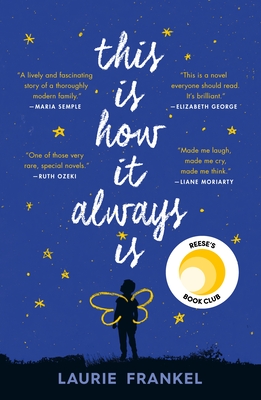
|
|
This is How it Always Is
Laurie Frankel
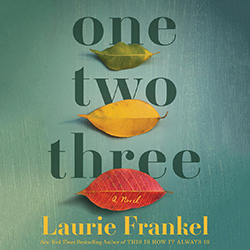 One of my favorite books last year was One Two Three and, One of my favorite books last year was One Two Three and,
book nerd that I am, I was thrilled when I learned that the author, Laurie Frankel, would be at Wine and Words, the benefit for the Brainerd Library last August. There I not only met Frankel, who is a wonderful human being, I learned that she has written a number of other books. The first night of Wine and Words, she talked about This is How it Always Is, and I immediately wanted to read it. Lots of other people must have felt the same way, because we sold out and I had to wait until I got back to the store to order one for myself! Friends, it was worth the wait. The book is very timely. Rosie, a doctor, and Penn, an author, have five lively sons. One day the youngest, Claude, announces that when he grows up, he wants to be a girl. The book follows the family as they deal with what this means both for Claude and also the whole family. I was in love with the characters from the beginning of the book and followed the family’s journey with great empathy. Frankel, herself the mother of a transgender child, wraps a current social issue in a great story, and treats it with great sensitivity.
|
| |
|
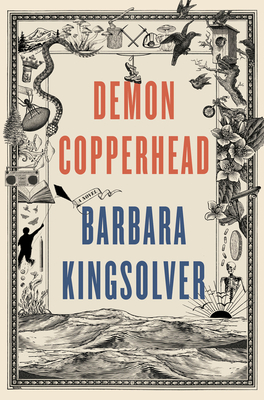 |
|
Demon Copperhead
Barbara Kingsolver
Fall is the traditional time for the release of books by major authors and Barbara Kingsolver’s newest book is right on schedule.
Demon Copperhead is a retelling of David Copperfield, by Charles Dickens. (I have not read Dickens’ book, but a plot summary showed great fidelity to it.)
It’s a searing indictment of the foster care system, a society which tolerates hunger in children, the opioid crises, and the generational effects of poverty and hopelessness.
Demon Copperhead, an intelligent and quick-witted boy, parents his mother in significant ways. She was the product of the foster care system, and lives in poverty without opportunities to change her life. Her opioid addiction and poor choice in marrying Demon’s stepfather result in Demon’s placement in several foster homes, nominally supervised by overworked and undertrained social workers.
Eventually, Demon hitchhikes from Appalachia to Tennessee to find his paternal grandmother. She makes arrangements for him to return to his town of origin to live with the high school football coach. For a time, his life is stable, and he achieves small town fame on the football field. However, a football injury results in Demon’s own opioid addition. This, of course, is not the end of the story, and my brief summary of the plot doesn’t convey the lyricism of Kingsolver’s writing.
The book is powerful. You’ll want to read it and to discuss it with others. It will be released October 18. We’ve ordered lots—contact the store today to reserve your copy. |
| |
|
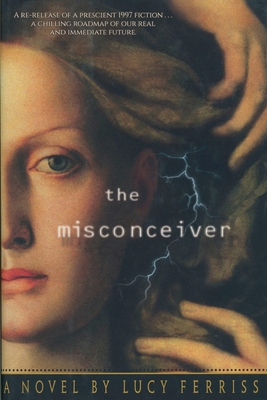 |
|
The Misconceiver
Lucy Ferriss
People often ask how we come to know about particular books. I usually give a general answer—reading reviews, talking to reps, and other booksellers, and so on. In the case of The Misconceiver, I have a more specific answer. Right after the Supreme Court overturned Roe v. Wade, I was reading Book Club, Ron Charles’ weekly bookish newsletter. He discussed The Misconceiver, a book which was published in 1997. The setting of the book was the near future—2011. Roe v. Wade had been overturned and there were many restrictions on women’s lives. Charles mentioned that the book had long been out of print, and it was very difficult to obtain even a used copy. That sounded to me like a challenge for Jen, who is a whiz at tracking down such books. Sure enough, I soon had my very own copy of The Misconceiver. The main character, Phoebe, worked with computers during the day and, like her mother and sister before her, performed illegal “misconceptions” in a rudimentary clinic in her basement at night. Phoebe lived in a society which had rolled back many of the progressive social trends we may have taken for granted before the recent Supreme Court ruling. Reading books such as this help us remember that many of our current rights are not guaranteed and remind us to be vigilant about protecting them.
If you are interested in reading The Misconceiver, there’s good news. It’s being rushed to print in paperback and will be available November 1. It may be preordered from our website. If you read it, give me a call and let’s talk. |
| |
|
|
|
|
|

Ann
|
|

|
|
Haymaker in Heaven
Edvard Hove
Haymaker in Heaven is, as described by the author, "a novel based on the vague memories of people who actually lived." The story begins in the year 1874, a time when a growing number of Norwegians are immigrating to America in hopes of a better life. Others choose to stay in their homeland. Hove describes the beauty and customs of Norway but also tells of the economic hardships many of the country's citizens face. Haymaker in Heaven includes distinctive characters, subtle humor, and compelling descriptions of the life and times in the late 19th Century in Norway and in the American Midwest. The mention of travel through Minnesota and settlement in South Dakota were especially intriguing to me. Readers who enjoyed Giants in the Earth won't want to miss this book. |
| |
 |
 |
 |
|
|

Bob |
|
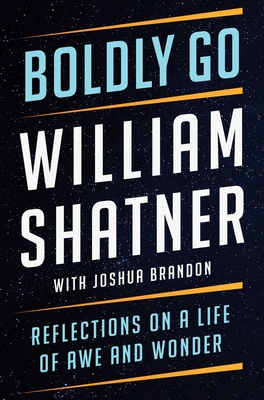
|
|
Boldly Go
William Shatner, co-written with Joshua Brandon
This is an autobiography of William Shatner, perhaps best known as Captain Kirk in the Star Trek series. It includes descriptions of his life as an actor, spouse, parent, friend but more accurately, it’s a book about his philosophy of life. Shatner weaves personal moments with stories about growing up so poor that he had a real appreciation of being able to eat in his more successful years. He includes stories about people and animals (he’s a big horse lover) he encountered along the way. He spends some time bringing in experts to discuss certain topics to make his stories legitimate. He talks about challenges he’s not been able to turn down, like running across the top of a moving train going 40 miles per hour, or an actual trip into space (which amazed me because he was 91 years old). He also goes into his philosophy of the interconnectedness of all things earthly. The one thing I hoped he would get into more was his work on Star Trek. He does, but down-plays it, saying he didn’t realize the cast didn’t particularly like him.
There was no spaceship on the cover, however, there was a star-field…or maybe it was the paper? If you are even remotely a “Trekkie” you’ll want to check this out.
|
| |
|

|
|
Radium
John Enger
I wouldn’t have gone out seeking this book—after all, it’s not science fiction. But after a couple of folks suggested I might find it interesting I started with the first 20 pages just to see what was there. In a thumbnail sketch, it’s about two brothers wandering along, creating chaos, doing dumb things, staying one step ahead of the authorities but somehow managing to come out OK. It’s sort of a book of all the weird people you may have met in your life. It has a violent side and after my 20 pages, I asked someone who had already finished the book if it was all going to be like this. He paused, thinking through all of the book in about 15 seconds, then said “yeah, pretty much.” Despite that, I decided to stay with it and pretty soon I was finding myself drawn into it. What would be the next impossible situation the brothers would get into?
As I said, it was a different kind of read for me, and it has a bit of a surprise ending. |
|
|
|
| |
|
 |
|
|
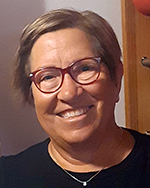
Doni
|
|
 |
|
Lucy by the Sea
Elizabeth Strout
The pandemic is here and Lucy’s ex-husband is determined to protect his family. One daughter is dispatched to Connecticut and the other ensconced in her apartment in Brooklyn, working from home. Lucy is convinced, by the death and hospitalization of acquaintances, to weather the storm on the coast of Maine. With William.
Their time in Maine is a time of isolation and contemplation as well as strong emotion as Lucy struggles to come to terms with her chaotic childhood and William’s previous infidelity. Motherhood is a strong theme, looking back to Lucy’s biological mother, her pretend mother, and her role as mother to her girls.
This book evokes the feelings of the darkest time of the pandemic: fear, loneliness, sorrow, anxiety, and boredom. Despite this, there is also hope and happiness, and the love of family shines through. And I must say, William comports himself much more favorably than in Oh, William!
|
| |
|
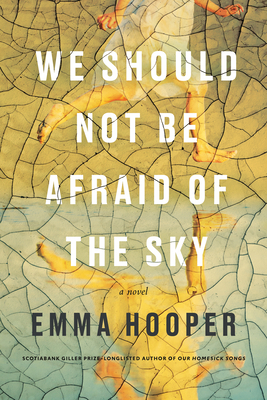 |
|
We Should Not Be Afraid of the Sky
Emma Hooper
Nine babies. Nine identical baby girls. And in her last moments, their mother instructs her slave Celia to drown the seven surviving babies in the river. Instead, Celia finds families in the village to adopt them.
Set in second century Pakistan, the girls grow up in the poor village, working the lemon groves in the relentless heat for the commander in the big house up the hill. And although they go home to different families, they always know they are sisters. Two tragically die of pox, one’s family leaves the village.
Circumstances, as they are wont to do, change drastically when the girls are captured by soldiers. They grow up responding to their new situations very differently, because although they look identical, they are not, and they confront the challenges of their tumultuous times in very different ways. They are heavily impacted by the Roman Empire crumbling, and the rampant persecution of Christians.
This compelling, lyrical novel is about many things: feminism, loyalty, determination, and many kinds of love. I did not expect to like this book as much as I did, I strongly recommend it. |
| |
|
|
|
|
|
| |
|
|
|
|
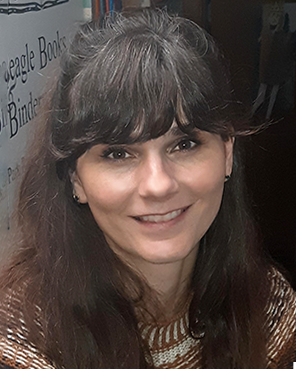
Gina |
 |

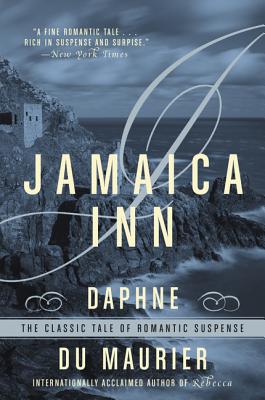
|
 |
Jamaica Inn
Daphne du Maurier
The final wish of Mary’s mother was that her daughter leave the hard work of the farm behind and enjoy life with her Aunt Patience and Patience’s new husband, Joss.
On Mary’s journey to join them, she asks the coachmen about her new home. The coachman informs Mary it is a dark place, where good people do not go. Good people do not stop or stay at Jamaica Inn.
Mary soon finds out her Aunt Patience isn’t the vibrant woman she remembers. Her hulking, drunken Uncle Joss is not the man Mary and her mother imagined. As time goes on, Mary tries to understand and unlock the mystery surrounding Jamaica Inn, regardless of the cost.
Du Maurier is a master at eeriness. Her ability to keep you questioning what is going on, who to believe, and how it will end is perfect for the fall spooky season.
|
|
| |
|
|
|
|
|

Hannah
|
|
I enjoy reading fictionalized biographies of real people from history. Here are three I very much recommend. |
|
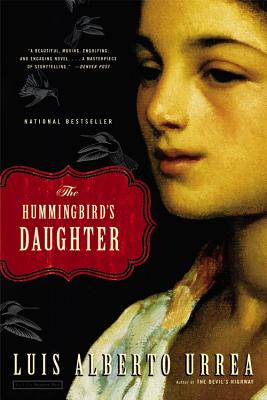
|
|
The Hummingbird’s Daughter
Luis Alberto Urrea
A masterpiece. I wish I’d known when I read it that the main character is an actual historic person, and a distant cousin to Urrea! He grew up with family stories about her, but also did research over several years.
The epic story of this Mexican girl, born in extreme poverty but a living legend while still young, would be worth reading if written by any competent author. But Urrea is far more than competent. He’s a poet in prose, with mastery of pacing and description and the creation of compelling characters and plot lines.
Spanish words are sprinkled throughout. Sometimes I looked them up online, but generally their approximate meaning is clear from context. I suspect that people who have a little Spanish will enjoy the opportunity to test their language skills. It’s certainly much less obtrusive than the French in Dorothy Sayers, for example.
|
| |
|
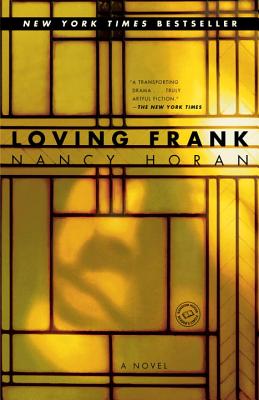
|
|
Loving Frank
Nancy Horan
Frank Lloyd Wright was a giant in the world of architecture and a larger-than-life personality, but there were things about him that were very small. This is the fictionalized story of his famous love affair with Mamah Borthwick Cheney, told from her point of view. We therefore get to see Wright’s full range of brilliance and idiocy. The author spent seven years writing Loving Frank, doing extensive research and changing the novel’s structure halfway through so that she had to start over. The care she took is reflected in the book we read.
Cheney and Wright were both married and had children when they fell in love. Frank was established in Oak Park, and his prairie style architecture was starting to become known to a wider audience. Cheney was an intellectual, a translator who spoke several languages, and a strong proponent of women’s freedom to live outside of the traditional boundaries defined for us. They traveled to Europe in the years before the first World War, so readers of this book get exposed to early 20th century history on two continents.
I live in Oak Park so am very familiar with some of the buildings in the first part of the book, which made this quite fun for me. If you ever visit Chicago, you can see them, and in some cases take a tour of their interiors. Somehow, I didn’t know anything about the way the Wright and Cheney love story ends, so I was shocked and taken aback. If this weren’t based in reality, I would have found it too far-fetched.
|
| |
|
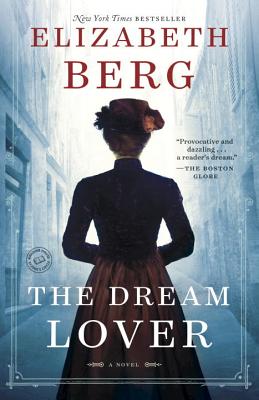 |
|
The Dream Lover
Elizabeth Berg
This is the story of George Sand, the 19th century female writer, cultural icon, and political activist. In the movie Midnight in Paris the Owen Wilson character wishes he could live in Paris in the days of Gertrude Stein. He gets a chance to visit that time and encounters a woman who wishes to live in Paris in the glory days of Toulouse-Lautrec. A character from the Lautrec era might well have wished to experience the circle of friends around George Sand: Eugene Delacroix, Frederic Chopin, Franz Liszt, Balzac, and more.
Aurore Dupin adopted the name George Sand initially to be taken seriously as a writer but ended up using it in her private life. Perhaps Sand was non-binary? She usually dressed as a man (this started when she was a theater critic who had to pay for her own tickets; and women were not allowed in the cheap seats), but sometimes wore beautiful gowns. She probably loved at least one beautiful actress but had a long string of male lovers. She chafed under laws that put her inherited fortune and decisions about her daughter and son in the hands of her awful husband. She spent half of each year in Paris to get away from him, to live among cultured people, and to write. She was a prolific and influential writer. She was ardently romantic, the aspect of her personality that most drove her decisions, and sets the tone for this novel.
The Dream Lover is historical fiction, written in a voice very like Sand’s. It’s based on extensive research, but the sources are wildly contradictory. Even Sand’s autobiography is demonstrably false in parts. Berg felt considerable freedom in building a story when no one knows all the facts.
|
|
|
 |
 |
 |
|
|
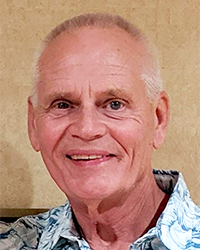
Lee |
|
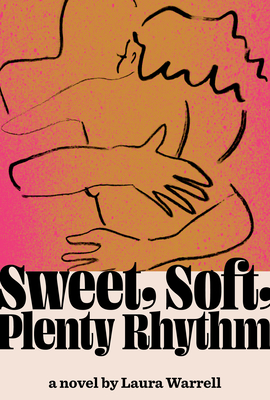
|
|
Sweet, Soft, Plenty Rhythm
Laura Warrell
Circus Palmer is a forty-year-old jazz trumpet player. He is also an old-school ladies’ man, with pretty much all of the negative connotations that phrase might bring to mind. His marriage to Pia failed years ago, and he seldom sees his daughter Koko. He feels closest in spirit to Maggie, a drummer with whom he has occasional flings. And there are other women ... Luz, Peach, Josephine, Odessa, ...
Circus tells his story, but it is counter-balanced by the voices of these women in his life. The result is a more honest and complete portrait of Circus, his life, and the people who make up his world.
In addition to this fascinating exploration of characters, this debut novel is a fine look at how our lives seem to unfold in ways that leave us all both somewhat amazed and quite probably a bit disappointed. (For those who will argue that *your* life has not been even a bit disappointing, did you get to be the astronaut or the professional ball player or the movie star or the rockstar you imagined for yourself when you were ten?)
|
| |
|
 |
|
Hester
Laurie Lico Albanese
Isobel Gamble is a young and amazingly talented seamstress. She and her husband Edward are forced to leave Scotland for a fresh start after his opium addiction has destroyed their lives. Upon arriving in Salem, Edward soon departs as a medic on a ship, leaving Isobel without money or friends.
While Edward is gone, Isobel falls in love with Nathaniel Hawthorne. And then, as the title suggests, Isobel must deal with Salem’s strict religious expectations, the town’s historical persecution of women, rigid social stratification, and all of the other means by which power can be retained by those who already enjoy it.
This novel is exceptionally well written and researched, and the author provides the reader with some very fine historical fiction. (And, no, you do not need to have read The Scarlet Letter to enjoy this book.)
Note: this book will be released October 4.
|
|
| |
|
| |
|
|
|

Tim
|
|

|
|
Pandora
Susan Stokes-Chapman
I enjoy reading history. Nothing against fiction, but even there, I lean heavily towards historical fiction. Combine those two genres with "Classics", and no joke, I get shivers. Pandora, by Susan Stokes-Chapman, is such a book, with the added fillip of being set in London in 1799. Given all I've just said about my preferences, this seemed nearly too good to be true. Imagine my pleasure when the story proved to be interesting, well-crafted, and plausible. Pandora Blake is the daughter of two antiquarians, who were killed in an accident at a dig in Southern Greece. A pithos (a large Greek terracotta urn) was discovered at that dig, and during the following twelve years, the secret of this discovery, and it's meaning, was kept from the young woman. "There is a fine line between coincidence and fate"....and it's not what you (the reader) think.
Note: this book is scheduled to release in January and may be pre-ordered now.
|
| |
|
|
|
|
|
|
Would you like to be a guest reviewer?
Email Sally at sally@beagleandwolf.com |
| |
|
|
|
|
|
— page top —
|
|







 Sally
Sally

























